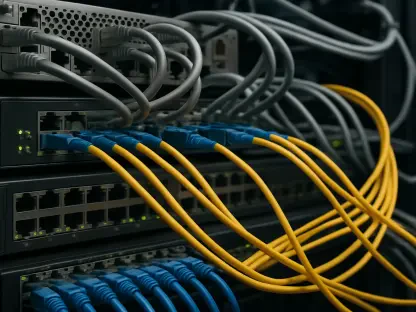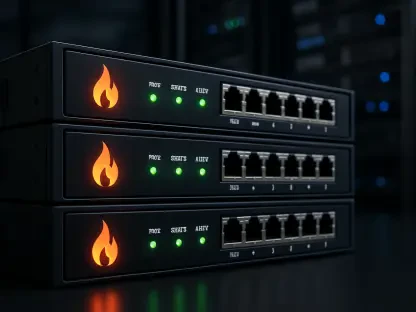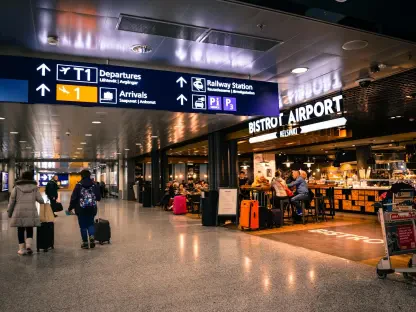Digital transformation has become a necessity within the dynamic retail landscape, and with over 520 stores across North America, Williams-Sonoma is at the forefront of this evolution. The company is pioneering the adoption of SD-WAN and SASE to modernize its network infrastructure, enhancing security, performance, and cost-efficiency across its physical retail locations.
The Need for Modernization
Williams-Sonoma’s traditional network infrastructure, based on T1 lines and MPLS connections, was increasingly becoming inadequate to support contemporary retail operations. The enhanced point-of-sale systems designed to improve customer transaction experience and the ubiquitous guest Wi-Fi required substantial bandwidth. This need for high-speed internet far exceeded the capacity provided by legacy T1 connections, leading to inefficiencies and limiting the store’s ability to provide seamless customer service.
Routing all traffic through centralized data centers compounded these issues with latency problems that negatively affected the performance of in-store applications. This inefficiency not only slowed down employee operations but also detracted from the overall customer experience, an essential facet in competitive retail environments. Additionally, maintaining MPLS circuits and on-premises security appliances across hundreds of stores involved significant operational costs and posed challenges in scalability, hindering Williams-Sonoma’s capacity to swiftly adapt to the evolving market demands.
Legacy Network Limitations
Williams-Sonoma’s legacy network architecture was fundamentally anchored in T1 lines and MPLS connections, which were traditionally considered reliable. However, the increasing demand from modern retail operations exposed several inherent limitations of this setup. Enhanced POS systems and guest Wi-Fi capabilities required bandwidth levels that were beyond the capabilities of T1 lines. As stores increasingly integrated online and offline shopping experiences, the need for higher bandwidth became critical to effectively showcase products from online catalogs within physical stores.
Centralized data centers were another architectural choice that faltered under the growing demand. Routing all internet traffic through these data centers led to significant latency issues, hampering the efficiency of critical retail operations such as inventory management, digital signage updates, and real-time sales processing. This inefficient routing mechanism impaired both employee productivity and customer satisfaction, further underscoring the necessity for network modernization. For Williams-Sonoma, the inadequacies of legacy infrastructure reflected a broader challenge in retail IT where traditional systems struggle to meet contemporary digital demands.
Cost and Efficiency Issues
The financial strain imposed by maintaining expansive MPLS circuits was substantial, as these connections are notably expensive compared to modern alternatives. The high operational costs associated with sustaining these circuits across Williams-Sonoma’s widespread retail network meant substantial budgeting allocations that could otherwise support business innovation and customer service enhancements. Furthermore, on-premises security appliances required constant maintenance and updates, amplifying the costs and complexities of secure network management for hundreds of store locations.
Scalability also emerged as a major issue, particularly as network demands grew and varied across different store environments. Traditional MPLS circuits did not offer flexible scalability, limiting Williams-Sonoma’s ability to efficiently expand or adapt its network infrastructure in alignment with retail growth strategies. This lack of scalability hindered quick adaptation to market shifts, impacting overall business agility. The legacy system’s cumbersome management protocols and their cost-intensive nature presented clear impediments, driving the need for a more responsive, cost-effective network solution.
Embracing SD-WAN and SASE
Williams-Sonoma is deploying SD-WAN to utilize multiple internet circuits, thereby optimizing traffic flow based on application needs. SD-WAN’s intelligent routing capabilities ensure that critical applications receive bandwidth priority, significantly improving network resilience and performance. This strategic shift allows the company to phase out expensive MPLS connections, providing high-quality service across multiple locations while maintaining cost efficiency.
Advantages of SD-WAN
SD-WAN technology stands as a transformative solution in Williams-Sonoma’s network modernization. By leveraging multiple internet circuits, SD-WAN dynamically adjusts traffic routing based on real-time application requirements, ensuring that essential retail operations such as POS transactions, digital signage, and cloud-based inventory systems receive priority connectivity. The adoption of SD-WAN introduces enhanced flexibility, enabling Williams-Sonoma to significantly improve network resilience and optimize performance.
This approach mitigates the costs associated with outdated MPLS connections, allowing the company to invest in more cost-efficient internet solutions while upholding high standards of service quality. Furthermore, SD-WAN’s built-in path selection capabilities ensure reliable connectivity by re-routing traffic through the most efficient paths, effectively reducing latency and improving overall system responsiveness. These enhancements support pivotal retail functions, bolstering both employee productivity and customer satisfaction through more streamlined and efficient transactional processes.
Benefits of SASE
In conjunction with SD-WAN, Williams-Sonoma is deploying secure access service edge (SASE) to enhance its network security framework. SASE delivers cloud-based security that minimizes reliance on on-premises hardware, offering scalable protection across distributed retail locations. This transition to a cloud-delivered security model provides several advantages, including identity-based access control, real-time threat detection, and effective policy enforcement, thereby fortifying the company’s defense against cyber threats.
SASE’s integrated security framework ensures a cohesive security posture, streamlining management and reducing complexity. By centralizing security protocols in the cloud, Williams-Sonoma can efficiently oversee security practices across all locations, enhancing agility and responsiveness. Given the growing importance of secure access to cloud applications and internet resources within retail, SASE ensures compliance and real-time protection, aligning security management with the company’s broader digitization efforts.
Key Requirements and Industry Gaps
Williams-Sonoma has outlined specific requirements essential for the successful deployment and operation of SD-WAN and SASE technologies. A unified control plane is pivotal for streamlined operations, preventing policy conflicts, and providing a single management console for both network and security strategies. Integrating security policies with SD-WAN traffic prioritization ensures optimal performance for critical applications, enhancing overall efficiency. Moreover, seamless integration with existing infrastructures is necessary to avoid isolated security silos that could complicate management.
Unified Control and Integration
For Williams-Sonoma, the implementation of SD-WAN and SASE demands a unified control plane that consolidates management operations across network and security strategies. This consolidation offers a single management console, ensuring coherent policy application and reducing the risk of conflicting protocols. By integrating security policies directly with SD-WAN’s traffic prioritization, the company can ascertain optimal performance levels for critical retail applications, avoiding the inefficiencies posed by isolated management silos.
Moreover, it is vital that these new technologies seamlessly integrate with Williams-Sonoma’s existing security infrastructures to maintain operational continuity. This integration prevents the emergence of isolated security protocols that could potentially create management complexities and vulnerabilities. Ensuring that SD-WAN and SASE harmoniously align with the company’s established systems is crucial for sustaining business operations and achieving a resilient and secure retail environment.
Addressing Solution Shortcomings
Despite the promising benefits of SD-WAN and SASE, current solutions often exhibit certain limitations. Many offerings necessitate separate management consoles for network and security operations, leading to operational inefficiencies and increased management burdens. These segmented management systems can introduce inconsistencies between applied policies, complicating the seamless application of security measures and adversely impacting overall network efficiency.
Furthermore, various SD-WAN and SASE solutions prioritize visibility in cloud environments while lacking robust support for monitoring on-premises applications. This gap in functionality can prove detrimental for Williams-Sonoma, where comprehensive oversight of both cloud and on-premises operations is vital. Addressing these shortcomings requires concerted efforts to develop integrated solutions that ensure consistent and comprehensive application monitoring, safeguarding against potential operational inefficiencies and security vulnerabilities.
Overcoming Challenges in Implementation
Deploying SD-WAN and SASE across Williams-Sonoma’s extensive network is not devoid of logistical obstacles. Specific challenges arise in various store locations, particularly those situated within malls where landlords often impose restrictions on available internet service providers. These limitations create single points of failure, compromising network reliability. Although 5G presents a potential backup solution, signal limitations within these environments pose notable deployment challenges.
Technological and Logistical Challenges
Williams-Sonoma’s modernization journey is punctuated with several technological and logistical challenges, particularly concerning the diverse store locations. In many malls, landlords impose restrictions on the selection of internet service providers, resulting in single points of failure that can significantly impact network reliability. These constraints highlight the necessity for a robust backup solution to maintain continuous operation despite potential disruptions. While 5G technology offers promise as a viable backup connection, signal limitations within malls can impede its effectiveness, presenting notable challenges to deployment.
To navigate these complexities, the company must carefully consider alternative solutions that ensure consistent connectivity across all locations. Identifying and integrating reliable backup options is critical to overcoming the constraints imposed by landlord policies. Furthermore, technological solutions must account for environmental specificities to mitigate deployment challenges effectively, ensuring sustained and scalable network operations that align with Williams-Sonoma’s business continuity strategies.
Strategic Deployment Approach
To address the varied challenges in SD-WAN and SASE implementation, Williams-Sonoma is pursuing a structured phased deployment strategy. This approach involves pilot deployments in select stores to test real-world performance and identify potential integration issues before a broader rollout. Pilot implementations enable the company to assess SD-WAN and SASE technologies in dynamic retail environments, providing invaluable insights into system efficacy, operational compatibility, and end-user impacts. These findings inform subsequent deployment stages, ensuring a smoother and more efficient transition to the new infrastructure.
Williams-Sonoma is also evaluating the viability of engaging a managed service provider to expedite deployment and leverage best-in-class solutions. Collaborating with specialized service providers offers the advantage of expert implementation and ongoing network support, mitigating deployment risks and enhancing operational efficiency. Additionally, adopting a hybrid approach that combines centralized SD-WAN hubs with SASE integration supports a balanced blend of security, control, and scalability, aligning with the company’s strategic shift towards a zero-trust security model.
MEF’s Role in SD-WAN and SASE Evolution
Williams-Sonoma recognizes the pivotal role of MEF (Metro Ethernet Forum) in driving the adoption and evolution of SD-WAN and SASE technologies. MEF’s efforts in developing industry standards and certification programs enable service providers and enterprises to align their solutions with best practices, ensuring adherence to stringent security and networking benchmarks. MEF’s certification programs offer a structured framework that assesses vendor solutions comprehensively, fostering confidence among enterprises adopting SD-WAN and SASE architectures.
Industry Standards and Certification
MEF’s certification programs are instrumental in guiding the future of SD-WAN and SASE implementations, establishing industry standards that help enterprises like Williams-Sonoma align with best practices. Through rigorous certification assessments, MEF ensures that vendor solutions meet high security and performance benchmarks, providing enterprises with the confidence to adopt these technologies. These certifications offer a framework that evaluates all aspects of SD-WAN and SASE offerings, from network reliability to security integrity, enabling informed decision-making based on certified excellence.
This structured approach to standardization mitigates risks associated with vendor lock-in, allowing enterprises the flexibility to choose solutions that best fit their operational needs. By setting uniform standards, MEF promotes consistency across SD-WAN and SASE deployments, ensuring interoperability and simplifying enterprise adoption processes. These efforts are vital in maintaining operational coherence and driving the widespread implementation of innovative network solutions within the retail sector.
Promoting Consistency and Collaboration
MEF plays a crucial role in promoting collaboration and consistency in the development of SD-WAN and SASE technologies. By fostering partnerships between network and security providers, MEF encourages the creation of more integrated and comprehensive solutions that address existing industry gaps. Initiatives such as standardized APIs for security threat intelligence sharing facilitate a cohesive security ecosystem, enabling enterprises to proactively mitigate cyber threats with greater efficiency.
MEF’s collaborative efforts contribute to the evolution of SD-WAN and SASE frameworks, ensuring they adapt to meet the nuanced needs of enterprises in cloud-driven environments. Promoting consistency and interoperability through strategic partnerships ensures that solutions remain scalable and flexible, catering to the dynamic demands of modern retail operations. These endeavors underscore the importance of unified industry standards and the collaborative evolution of network and security technologies.
A Blueprint for Future-Proofing Retail Networks
Digital transformation is essential in today’s ever-changing retail landscape. Williams-Sonoma, with over 520 stores across North America, is leading this shift. The company is taking groundbreaking steps to modernize its network infrastructure by implementing SD-WAN (Software-Defined Wide Area Network) and SASE (Secure Access Service Edge) technologies. These advancements aim to improve security, optimize performance, and boost cost-efficiency throughout all its physical retail locations.
Williams-Sonoma’s embrace of these technologies underscores its commitment to staying ahead in the competitive marketplace. SD-WAN enables more agile and efficient control over network traffic, ensuring seamless communication and data transfer between stores and their headquarters. SASE, on the other hand, integrates network security and connectivity, providing a comprehensive solution to protect against increasing cyber threats. This combination not only reduces operational costs but also ensures a higher level of security, fostering a safer shopping experience for customers.









